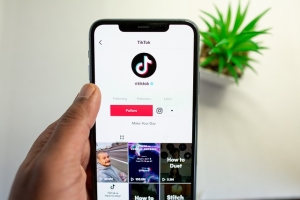Conquering TikTok: A Comprehensive Guide to Building a Winning Video Content Strategy
At its core, TikTok is a social media platform dedicated to short-form, user-generated video content. It’s a space where creativity flourishes, and trends move at a breakneck speed. Upon entering the app, you’re greeted by the ‘For You’ page, a never-ending stream of videos curated by TikTok’s algorithm based on your interactions. On the other side is the ‘Following’ page, which shows videos from accounts you follow. Understanding this basic layout helps you see how your content might fit into a user’s experience.
TikTok is loaded with a plethora of creative features that you can use to spice up your content. Let’s take a quick look at some of them:
Filters & Effects: These add a creative spin to your videos. From beauty filters to augmented reality effects, you can use these tools to make your content more engaging and fun.
Music & Sound: This is a critical aspect of TikTok, as many trends are based on specific songs or sound clips. You can browse through a vast library of music and sounds to add to your videos.
Duets & Stitches: These features allow users to react to or interact with other videos. Duets split the screen between the original video and your response, while stitches let you incorporate parts of another video into your own.
Text & Captions: You can overlay text on your videos, with various fonts and colors to choose from. Additionally, providing captions can make your content more accessible.
Hashtags: Much like other social platforms, hashtags on TikTok categorize your content and make it discoverable to a larger audience.
The algorithm and importance of hashtags
The TikTok algorithm is a complex, AI-driven system that decides which videos appear on a user’s ‘For You’ page—the app’s primary feed. Algorithm Mechanics: Although the specific workings are undisclosed, the algorithm takes into account several factors:
- User Interactions: Includes videos a user has liked or shared, accounts followed, comments posted, and content created.
- Video Details: Details of the videos that users watch, such as the sounds, hashtags used, and the location.
- Device and Account Settings: User’s device and account settings like language preference, location, and device type.
The more a user interacts with certain types of content, the more the algorithm tailors their feed to reflect those interests. Therefore, creating engaging content that encourages user interaction can increase your visibility on the platform.
Hashtags on TikTok serve a similar purpose as on other social media platforms—they categorize content and make it discoverable. However, their significance extends beyond that on TikTok.
Discoverability: When users click on a hashtag, they are led to a page where they can view all the videos tagged with it. By using popular and relevant hashtags, you can increase the chances of your video being discovered by a larger audience.
Trending Hashtags and Challenges: TikTok often features trending hashtags and challenges on its ‘Discover’ page. Participating in these can boost your visibility and engagement.
Context: Hashtags provide context to your video. When used correctly, they can effectively communicate what your video is about to the audience and the algorithm.
Branded Hashtag Challenges: Businesses can also create branded hashtag challenges to engage users and promote their brand. These challenges often go viral and generate a lot of user-generated content.
The best way to make use of TikTok’s algorithm and hashtags is by getting to know your target audience, and that’s your next step in creating a successful TikTok marketing strategy.
Identifying your target audience
TikTok’s user base is incredibly diverse, but it’s particularly popular among younger users. However, the platform has been increasingly adopted by older demographics over recent years as the platform has gained popularity.
It’s important that your target audience on TikTok should align with your overall brand’s target audience for TikTok marketing to be successful, remember that you’re trying to reach potential customers here. Think about who your products or services are designed for, and what their interests, needs, and behaviours are. If you’ve already done target audience research for your other marketing efforts, apply those insights to your TikTok strategy as well.
You can understand your current TikTok audience better by conducting surveys or polls. This can be done on TikTok using the Polls sticker, or through your other marketing channels. Ask questions that help you better understand your audience’s interests and preferences. By identifying and understanding your target audience, you can create TikTok content that appeals directly to them, increasing your chances of engagement and conversion.
A clear set of goals is the cornerstone of any successful TikTok strategy
First, identify what you want to achieve through TikTok for business marketing purposes. Are you looking to increase brand awareness? Drive traffic to your website? Promote a new product or service? Engage with your customers more effectively? Define what success looks like for your business on TikTok and how you’re going to achieve that with your marketing campaigns.
The SMART framework ensures your goals are Specific, Measurable, Achievable, Relevant, and Time-bound:
Specific: Your goals should be clear and well-defined. Instead of “get more followers,” a specific goal could be “gain 1,000 new followers in 30 days.”
Measurable: Ensure your goals can be tracked. TikTok’s built-in analytics can help you measure your performance.
Achievable: Your goals should be realistic given your resources and capabilities. While it’s good to aim high, setting unattainable goals can demotivate your team.
Relevant: Your TikTok goals should align with your broader business objectives. If your main business goal is to increase online sales, a relevant TikTok goal could be to drive more traffic to your online store.
Time-bound: Set a timeline for when you want to achieve your goals. This creates a sense of urgency and can help keep your team focused.
Once you’ve set your goals, ensure your content strategy aligns with them. For example, if your goal is to increase brand awareness, you might focus on creating entertaining, shareable videos that highlight your brand’s personality. If your goal is to drive website traffic, you could create videos that showcase your products and include a call-to-action encouraging viewers to visit your website.
Remember, your goals may evolve over time as your business grows and as you learn more about what works on TikTok. Regularly review and adjust your goals as necessary.
One of the key factors in a successful TikTok strategy is consistency
TikTok’s algorithm tends to favour accounts that post regularly. Consistent posting signals to the algorithm that you’re an active and reliable content creator, which can help increase your visibility on the platform.
Aiming to post at least once a day, six days a week is a good target. This ensures you’re frequently putting out new content for your followers and staying at the top of their feeds. It’s also important to note that quality should not be sacrificed for quantity. It’s better to post one well-crafted video a day than several low-quality ones.
The best time to post on TikTok can depend on several factors, including where your audience is located and when they’re most active. TikTok’s analytics can provide insights into when your followers are most active. As a starting point, you might aim to post during the hours when your followers are most likely to be browsing TikTok.
A content calendar can be an invaluable tool in maintaining a consistent posting schedule. It allows you to plan out your content in advance and ensure that you’re posting regularly. Your content calendar might include the dates and times you plan to post, the content of each post, and any relevant hashtags or keywords.
Consider using a social media management tool that supports TikTok, such as Later or Hootsuite, to schedule and automatically publish your posts. This can help ensure you’re posting consistently, even when you’re busy with other aspects of your business.
By maintaining a consistent posting frequency, you can keep your followers engaged and increase your chances of being discovered by new audiences.
Monitor your TikTok analytics to finetune your strategy
Taking a data-driven approach to your TikTok strategy is vital. By monitoring your TikTok analytics, you can gauge the effectiveness of your content and fine-tune your strategy based on what’s working and what’s not.
To access TikTok analytics, you need to have a Pro Account, which is free to set up. Once you’ve done this, you’ll find the analytics option in your account settings. It might take up to seven days for the data to generate.
TikTok analytics provides three main categories of metrics:
Profile Overview: This shows the total video views, profile views, and follower count over the past 7 or 28 days.
Content Insights: This provides data about your posts and how they’re performing, including views, likes, shares, comments, average watch time, traffic source types, and audience territories.
Follower Insights: This gives you demographic information about your followers, including gender distribution, top territories, follower activity (times when your followers are online), and videos your followers watched.
Use the data to identify trends and insights. For example, if your videos get more engagement at a particular time of day, consider posting more frequently during those hours. If certain types of content or certain hashtags are getting more views, incorporate more of those into your strategy.
Use your analytics to inform your content strategy. If certain types of videos aren’t performing well, it might be worth experimenting with different content. If your followers are mostly active during specific hours, try to post during those times.
Regularly review your analytics to track your progress towards your goals and adjust your strategy as needed. Remember, what works today might not work tomorrow, so staying agile and responsive to your analytics is crucial for success on TikTok.
TikTok is a platform that thrives on novelty and creativity. Trends come and go rapidly, and what works for one account might not work for another. Use the data from your analytics and experiment to explore different types of content, formats, and strategies to see what works best for your brand and audience.
Creating a winning TikTok video content strategy for your business involves a deep understanding of the platform, a clear view of your target audience, and a commitment to setting and measuring strategic goals. It requires consistency in posting, a data-driven approach to reviewing results, and an openness to experiment and adapt.
While it may seem like a lot to take in, remember that the most successful TikTok strategies are those that evolve with time and experience. Each step, whether it’s understanding the algorithm, identifying your audience, or trying a new type of content, brings you closer to a TikTok strategy that not only resonates with your audience but also drives tangible results for your business.
Remember, TikTok is not just a platform; it’s a community. It’s a place where creativity thrives, and where brands can build genuine connections with their audience. So, as you embark on your TikTok journey, strive to create content that not only promotes your business but also adds value and excitement to your followers’ TikTok experience. Happy TikToking!





Leave a Reply
Want to join the discussion?Feel free to contribute!